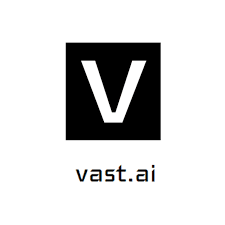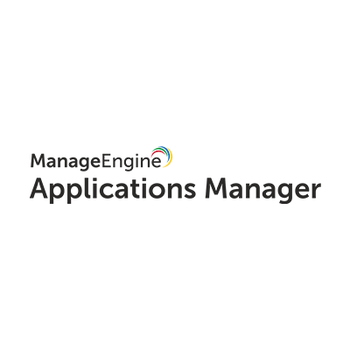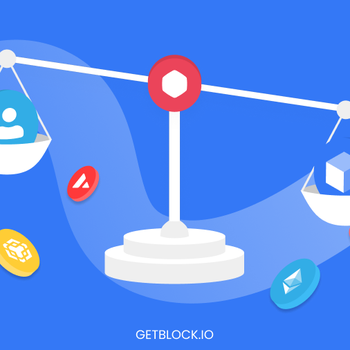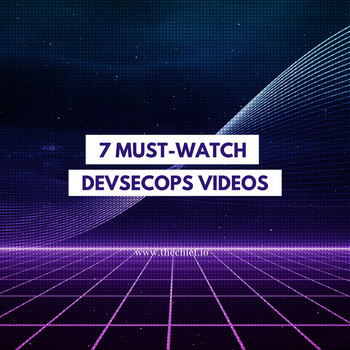Comparison of Cloud GPU Providers
in Machine Learning , Cloud Computing , MLOps , FinOps

Shifting focus from just video and gaming, GPU is now being adopted in many fields such as finance, health care, machine learning, data science, and other new fields like cryptomining. This makes it important to be available for use on the cloud for easy accessibility, especially now that companies move from on-premise infrastructure.
However, getting a hold of which cloud providers offer the best GPU service can be difficult, and this article tackles just that.
While most people are familiar with CPUs, GPUs are famous for being a key component in providing great graphics in gaming systems and graphics-intensive software. In recent times, GPUs have been widely adopted in artificial intelligence and machine learning to process extensive data used in training machine learning models.
Graphics Processing Unit, GPU, just like CPU, is a silicon-based microprocessor used to accelerate graphics creation by manipulating and altering the memory. Unlike CPUs, GPUs do their computation in parallel, enabling them to do intense computer calculations at once.
This high computational speed is what is needed to render high-quality graphics like in video games and intensive data point processing required in data science and training machine learning models.
In native IT infrastructures, many organizations use GPUs for their compute-intensive applications and workloads. Like in the case of many technology stacks, GPU technology is fast-changing, with NVIDIA (one of the biggest GPU providers) releasing a new GPU almost every year. Keeping up with this fast-changing technology is not only tricky but also very expensive.
However, since many organizations are now moving their IT infrastructure to the cloud, cloud service providers can continually update their GPU technology and make it available to these companies at a lower cost than on-premise.
There are several GPU cloud providers, including major cloud service providers. They all offer GPUs of various models, compute power, storage capacity, and price. Let’s explore some of the best in this article.
Gcore
The Chief I/O choice.
Gcore offers a comprehensive suite of cloud, edge, and AI solutions to accelerate AI training and enhance overall performance. Leveraging powerful NVIDIA A100 and H100 GPUs, Gcore's infrastructure supports intensive AI training, deep learning, and data analytics workloads. Their services include flexible configurations, from bare metal servers to virtual instances, and managed Kubernetes with GPU nodes for dynamic workloads.
Gcore's competitively priced solutions are designed for high efficiency in compute-intensive tasks. They provide pre-configured AI environments for TensorFlow, PyTorch, and other frameworks, simplifying integration and rapid deployment of AI models. Their cloud platform supports both single-GPU and multi-GPU setups, catering to diverse project needs from small-scale experiments to large-scale production deployments.
Gcore's Kubernetes offering enhances its infrastructure by providing automated scaling and advanced management tools. Features like autoscaling and autohealing make Kubernetes ideal for dynamic workloads, such as machine learning and video processing. Managed Kubernetes allows the use of Bare Metal and VMs with GPU as worker nodes, enabling easy GPU utilization in containers by requesting custom GPU resources, just like CPU or memory.
In addition to its cloud services, Gcore is also a leader in AI/ML research and development. They have been recognized for launching the first AI speech-to-text solution for the Luxembourgish language, earning 'Highly Commended' recognition in the Industry Innovation category at the NVIDIA Partner Network Awards EMEA 2024.
Overall, Gcore is an excellent partner for companies seeking to leverage AI and cloud computing for innovation and growth due to its adaptability, scalability, and advanced technology.
Atlantic.Net
Atlantic.Net is an award-winning USA-based hosting provider in business for over 31 years. They provide always available support based in the USA. Atlantic.Net is a premier GPU hosting solution provider for businesses and developers seeking high-performance computing power. Their service is specifically designed to provide high through-put and works best in frame works that require strict cyber security and compliance requirements including HIPAA, HITECH, PCI, and SOC certifications..
Powered by cutting-edge NVIDIA GPUs, including the H100NVL and L40S, their Cloud and Dedicated GPU hosting is ideal for AI, machine learning, and data-intensive workloads. With rapid deployments, you can spin a GPU cloud instance in less than 60 seconds. They offer hourly and monthly plans and provide discounts with term commitments. The infrastructure is built on top-tier Super Micro and Dell hardware, with SSD and NVMe storage options, ensuring lightning-fast data access and minimal latency from eight global regions. They provide a 100% SLA guarantee.
Latitude.sh
Latitude is a specialized Bare Metal Cloud Computing platform that offers notable processing power through its last-generation hardware and automation as a low-cost alternative to public cloud services. This platform is ideal for high-performance and high-throughput applications such as streaming, VPNs, CDNs, online gaming, blockchain, and AI/ML inference use cases.
One notable feature of Latitude is its limitless inbound traffic and 20TB outbound included for each bare metal server, all over a premium Tier 1 Network and Internet Exchanges. It also provides substantial DDoS mitigation with a 2Tbps capacity, ensuring high levels of protection.
The platform combines the capabilities of high-performance, single-tenant bare metal servers with a VM-like experience. Latitude offers a variety of deployment options, including edge computing, as well as a sophisticated API for simple maintenance.
Developers can incorporate Latitude into their stack using technologies like Terraform and infrastructure in advanced global data centers. This platform is trusted by major companies such as Riot Games and provides quick integration and environment adjustments via its APIs and interfaces.
Amazon Web Services (AWS)
As one of the first major cloud providers to provide GPU cloud service, Amazon offers various GPUs in its P3 and G4 EC2 instances. Amazon’s P3 instance offers the Tesla V100 GPU (one of the most popular NVIDIA GPU provided by many cloud providers), which has 16 GB and a 32 GB variant of VRAM per GPU. The G4 instances are in two types: G4dn, which offers NVIDIA T4 GPUs with 16GB VRAM, and the G4ad instances powered by more powerful AMD Radeon Pro VS20 GPUs with 64 vCPUs.
AWS allows clustering multiple GPU instances using the xlarge instance sizes, available in various locations, including US East, US West, Europe, Asia Pacific, Middle East, Africa, and China regions, depending on your chosen GPU instance.
Paperspace
Paperspace is easily one of the best cloud dedicated-GPU providers with a virtual desktop that allows you to launch your GPU servers quickly.
It offers 4 GPU cards starting from the P4000 GPU with 8GB VRAM at $0.51 per GPU/hour, the 16GB VRAM P5000 GPU at $0.78 per hour, P6000 dedicated GPU with 30GB VRAM at $1.10 per hour, and the powerful 16GB NVIDIA Tesla V100 GPU which is ideal for various intensive tasks at $2.30 per hour.
Paperspace also offers multiple GPU clusters with its P5000 x 4 and P6000 x 4 GPUs offered at $3.12 and $4.40 per hour, respectively.
Google Cloud Platform
To allow you to run your intensive applications, Google Cloud offers a wide range of GPU servers in its cloud instances.
It offers the popular NVIDIA V100 GPU with 16GB GPU RAM and 900GB/s bandwidth and the Tesla K80 12GB VRAM, 240GBps bandwidth at $2.48 and $0.45 per hour, respectively.
Other GPUs available on Google cloud include the NVIDIA Tesla P100 (16GB VRAM, 732GBps bandwidth @ $1.46 per GPU/hour), T4 (16GB VRAM, 320GBps bandwidth @ $0.35 per GPU/hour), and P4 (8GB VRAM, 192GBps bandwidth @ $0.6 per GPU/hour).
Google cloud’s Tesla T4 GPU is a high bandwidth and highly efficient multipurpose GPU that can be used for various high-end workloads at a low cost per hour.
The T4 and other GPUs are generally available in the US central region (Lowa). Depending on your chosen model, Google cloud GPUs are available in US West (Oregon, Los Angeles, Las Vegas, and Salt lake city), US East, North America, South America, Europe, and Asia.
Vast.ai
Vast.ai is a marketplace that allows both public and private individuals to rent out their unused GPU capacities.
With various individual cloud GPUs available in different locations worldwide, you can get a Tesla V100 GPU with 16.2GB GPU RAM and 71.45GB/s bandwidth at just $0.85 per hour in the Texas US region.
Other cloud GPU models available include GTX 1080, RTX 3090, and Quadro P5000, all at a relatively low price compared to major cloud providers.
Oracle Cloud
Oracle Cloud offers three NVIDIA GPU models: Tesla P100 16GB VRAM with 25GBps bandwidth at $1.27 per hour, the popular Tesla V100 GPU with 16GB VRAM and 4GBps bandwidth at $2.95 and the new powerful NVIDIA A100 GPU with 40GB VRAM and 12.5GBps bandwidth at $3.05 per GPU/hour. Oracle is the first to offer the A100 GPU with double memory and a much larger local storage capacity.
Oracle cloud GPUs like NVIDIA Tesla Volta V100 and P100 are also made available on virtual machines and can be used in the London (UK), Ashburn(US), and Frankfurt (Germany) regions.
Microsoft Azure
Microsoft Azure offers a wide number of GPUs in its cloud instance series. It offers the NVIDIA Tesla V100 at $2.95 per hour and the T4 GPU with AMD EPYC2 processor in its NCv3 instance series.
It also offers the Tesla M60, Volta V100, and the K80 GPU at $0.87 per GPU/hour. The AMD Radeon Instinct M125 GPU is one of the most powerful GPUs offered by Microsoft Azure, and it only operates on Windows OS.
Microsoft Azure GPUs and virtual machines are generally available in South Central US, US West, and North Europe Azure regions.
LeaderGPU
LeaderGPU is a full-fledged platform for renting cloud GPUs. It makes a wide range of GPUs available depending on your use case and time commitment.
It provides various GPU models like the NVIDIA Tesla Volta V100 (16GB GPU RAM, 900Gbps bandwidth), Tesla P100 (16GB GPU RAM, 720Gbps bandwidth), RTX 3090 (24GB GPU RAM, 936ps bandwidth), Tesla T4 (16GB GPU RAM, 320Gbps bandwidth) and GTX 1080 (8GB GPU RAM, 320Gbps bandwidth).
It offers these GPU servers primarily as multi GPUs, such as the 6 x Tesla T4 at €90.71 per day and an 8 x GTX 1080Ti at €108.3 per day.
IBM Cloud
IBM Cloud offers 3 NVIDIA T4 GPU with 32GB GPU RAM but varying Intel Xeon processors in its GPU cloud instances. The T4 GPU with an Intel Xeon has 20 CPU cores offered at $819/month. The 32 cores Intel Xeon 5218 T4 GPU is offered at $934/month, and the Intel Xeon, 6248 T4 GPU with 40 cores, is offered at $1,704 per month.
IBM Cloud GPUs are available in various data centers, including the US, Canada, EU, and Asia regions.
They also offer 4 variants of AC virtual GPU servers starting from $1.95/hour.
Alibaba Cloud
Alibaba Cloud offers GPU in 5 instance variants: the GA1, GN4, GN5, GN5i, and GN6 instance types. The GA1 instances offer a maximum of 4x AMD Fire Pro S7150 GPU with 32GB GPU RAM, the GN4 Instances offer 24GB GPU memory NVIDIA Tesla M40 GPU, and the GN5, GN5i, and GN6 instance offers Tesla P100 (128 GB, max 8x), P4 (16GB VRAM, max 2x), and Tesla V100 (128GB GPU memory) respectively.
Tencent Cloud
Tencent Cloud is a cloud platform that provides various cloud solutions, including cloud GPU services. It offers various NVIDIA GPU instances dedicated to large computing needs. The Tencent Cloud GN10 instances offer the 32GB VRAM Tesla V100 with NVLINK, the GN2 instance offers Tesla M40 GPU, the GN6 instance offers Tesla P40 GPU, and GN7 and GN7vw NVIDIA GPU instances are both powered by the Tesla T4 GPUs.
Tencent Cloud GPU instances are available in Asia, in Guangzhou, Shanghai, Beijing, Singapore, and Silicon Valley in the Asian region.
You might need to check the Tencent cloud website for the closest availability zone to your region.
Which GPU Cloud Provider Should I Choose?
Choosing a GPU cloud provider often depends on your unique needs and circumstances. Factors such as your budget, regional availability, and the specific GPU model required should influence your choice.
For those looking for a versatile and reliable option, The Chief I/O choice is Gcore Labs. This provider stands out as an excellent choice. Here’s why:
- Gcore leverages powerful NVIDIA A100 and H100 GPUs, ensuring top-notch performance for AI training, deep learning, and data analytics workloads.
- They offer a range of configurations, including bare metal servers, virtual instances, and managed Kubernetes with GPU nodes, accommodating various project requirements.
- They provide environments optimized for TensorFlow, PyTorch, and other frameworks, facilitating easy integration and rapid deployment of AI models. The platform supports both single-GPU and multi-GPU setups, suitable for small-scale experiments and large-scale production deployments.
- Gcore also features automated scaling to ensure optimal resource utilization and cost-effectiveness. Advanced monitoring and management tools help users track performance metrics and adjust configurations as needed. Autoscaling and autohealing make Kubernetes ideal for dynamic workloads such as machine learning and video processing.
- Gcore is recognized for its contributions to AI/ML research and development, including the first AI speech-to-text solution for the Luxembourgish language.
All of these factors make Gcore the most attractive option for us.
Get similar stories in your inbox weekly, for free
Share this story:
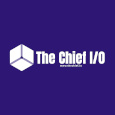
The Chief I/O
The team behind this website. We help IT leaders, decision-makers and IT professionals understand topics like Distributed Computing, AIOps & Cloud Native
Latest stories
How ManageEngine Applications Manager Can Help Overcome Challenges In Kubernetes Monitoring
We tested ManageEngine Applications Manager to monitor different Kubernetes clusters. This post shares our review …
AIOps with Site24x7: Maximizing Efficiency at an Affordable Cost
In this post we'll dive deep into integrating AIOps in your business suing Site24x7 to …
A Review of Zoho ManageEngine
Zoho Corp., formerly known as AdventNet Inc., has established itself as a major player in …
Should I learn Java in 2023? A Practical Guide
Java is one of the most widely used programming languages in the world. It has …
The fastest way to ramp up on DevOps
You probably have been thinking of moving to DevOps or learning DevOps as a beginner. …
Why You Need a Blockchain Node Provider
In this article, we briefly cover the concept of blockchain nodes provider and explain why …
Top 5 Virtual desktop Provides in 2022
Here are the top 5 virtual desktop providers who offer a range of benefits such …
Why Your Business Should Connect Directly To Your Cloud
Today, companies make the most use of cloud technology regardless of their size and sector. …
7 Must-Watch DevSecOps Videos
Security is a crucial part of application development and DevSecOps makes it easy and continuous.The …






